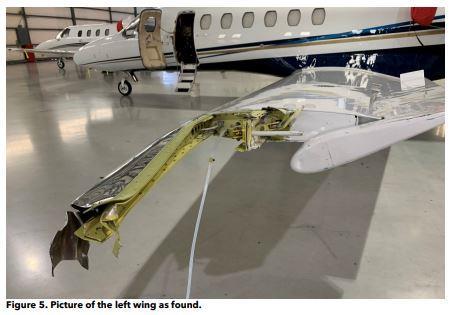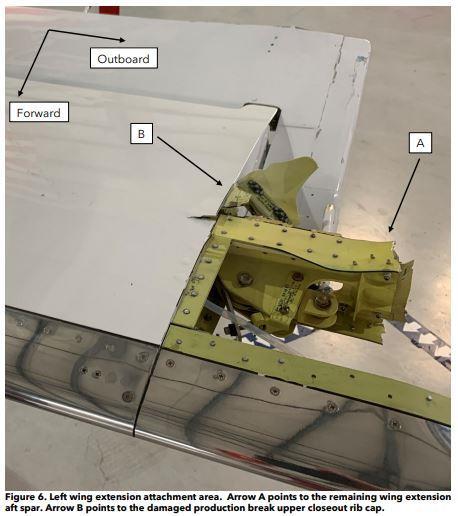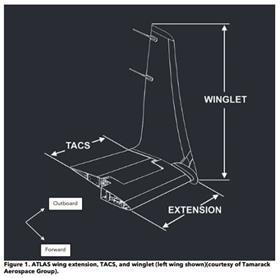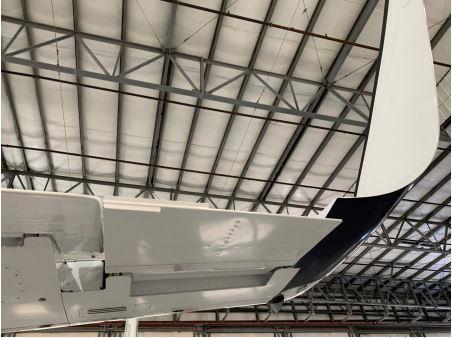The National Transportation Safety Board (NTSB) has released photographs showing the damaged left wing of a Cessna Citation 525B that lost a Tamarack-made wing extension during a March 2023 flight.
The agency included the images in an aircraft-systems report released on 1 April as part of its ongoing investigation.

“The left wing extension, winglet and [flap] were all missing, except for approximately 28in of the leading edge of the wing extension,” says the NTSB’s report. The left wing’s root and forward spar were also buckled, “and the remaining structure started to bend downward”.
The wing extension, winglet and flap – specifically called a Tamarack Active Camber Surface – were components of the jet’s aftermarket-installed Tamarack Active Technology Load Alleviation System, or ATLAS.


The system includes a central control unit that measures acceleration and, based on loads, commands two actuators – one on each wing. Those actuators move the control surfaces, improving efficiency and countering turbulence, according to Tamarack.
The NTSB says tests of jet’s ATLAS control units uncovered no functional anomalies but the agency has not yet said what caused the incident.
Tamarack noted on 1 April that, “No malfunction of ATLAS [has been] found after a year of intensive investigation”.
The incident occurred during a flight on 30 March 2023 from Walnut Ridge, Arkansas to Fort Myers, Florida. While descending over the Gulf of Mexico, at about 30,000ft, the pilot felt two “big jolts”, according to a preliminary NTSB report released last year. Looking out the window, the pilot saw that the left wing’s winglet was missing. He landed safety at Tampa International airport with no injuries.
The preliminary report noted that the ATLAS system had been installed in December 2022, and that in February 2023 – the month before the accident – the wing-mounted ATLAS control units had been replaced “as a result of fault alerts… during two separate flights”.
Tamarack notes on 1 April that the 525B’s wingtip has since been “fully restored” and that the jet has returned to service.
The company has been seeking to clear its name after the NTSB on 26 February said it was revising a 2021 accident report to remove a conclusion that Tamarack’s ATLAS system caused a deadly 525 crash in 2018.
The agency had previously concluded that the jet’s Tamarack control surfaces deployed asymmetrically, causing it to roll and crash. It now says evidence is “insufficient to conclude” that the left winglet was extended at the time of impact or that the Atlas system caused the jet to roll.
The NTSB revised its report following a review prompted by a petition from Tamarack, which has long insisted its product did not cause the accident.
Story headline updated on 3 April to clarify that the winglet separated.



























